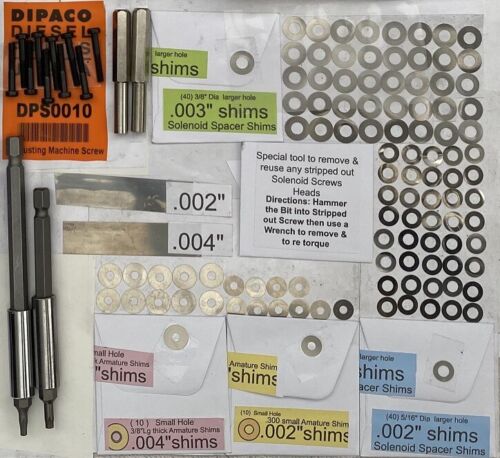I have a better update than the last. I found some videos over the weekend suggesting that injectors whose armature to poppet body clearance has fallen below spec due to wear sometimes have stiction issues due to the oil in that small gap creating a suction effect which the magnetic force of the solenoid cannot overcome. In this case, an injector shim kit can usually get some more life out of worn injectors. Given the driver description of oil sludge, I thought perhaps these injectors were on the low side of spec such that too-thick oil could make its way into the gap and cause stiction.
I pulled the number 6 and number 8 solenoids with the intention of measuring the armature clearance. Number 8 was below spec, while number 6 was at the lower limit of spec (a .002” feeler gauge barely slid underneath). I did, however, see something remarkable. Here is a picture of the first solenoid I pulled (#8):
You must be registered for see images attach
There is a very significant amount of debris in the oil there. The pieces are reminiscent of carbon buildup: small, hard flakes that crack when pushed between pad and nail of the finger.
The same sort type of debris was found beneath the number 6 solenoid.
With these two easily accessible solenoids removed and cleaned, I decided to repeat the injector buzz test. Here is a video of the test post-cleaning.
xc_hide_links_from_guests_guests_error_hide_media
It’s easy to hear that injectors 6 and 8 now sound like a normal clatter, as opposed to the weak buzz of the other six.
Once I remove and clean the rest of the solenoids/armatures, I’d be quite surprised if the truck didn’t start. Getting the truck to start and run enough to get it to a storage area is what I have been asked to do. However, I am left to wonder what this debris is and how it got there. I’ll recommend to the owners that they do frequent oil changes until they are more comfortable with the truck. Any other suggested actions in a case like this?

